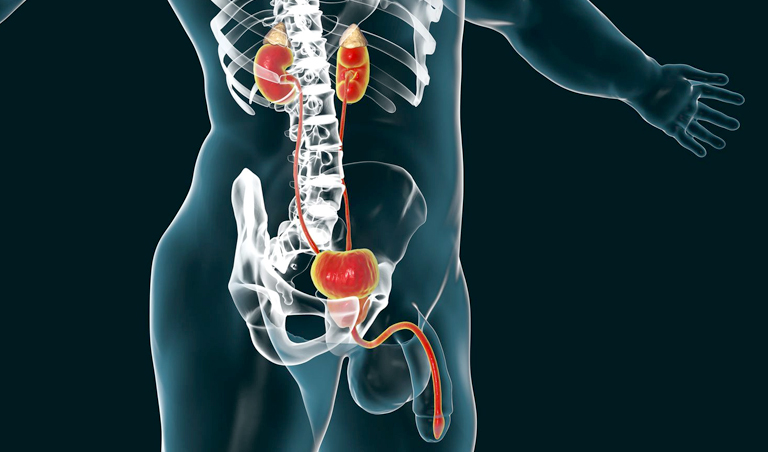Urethra
The urethra can be affected by conditions such as strictures (narrowing) and cancers, which may require surgical interventions. Here’s an overview of the primary surgical treatments for urethral strictures and penile cancer:
Urethral Strictures
Endoscopic Stricture Surgery
-
Urethrotomy (Internal Urethrotomy):
- Description: An endoscopic procedure to incise the stricture and widen the narrowed segment of the urethra.
- Procedure:
- The patient receives local or general anesthesia.
- A cystoscope (a thin tube with a camera) is inserted through the urethra.
- A special knife or laser is used to make an incision in the stricture to open the urethra.
- Advantages:
- Minimally invasive.
- Short recovery time.
- Performed as an outpatient procedure.
- Disadvantages:
- High recurrence rate (up to 50% or more).
- May require repeated procedures.
-
Urethral Dilation:
- Description: Gradual stretching of the urethra using a series of increasing diameter dilators.
- Procedure:
- The patient receives local anesthesia.
- Dilators are inserted sequentially to stretch the stricture.
- Advantages:
- Minimally invasive.
- Can be performed in an outpatient setting.
- Disadvantages:
- High recurrence rate.
- May need to be repeated regularly.
Urethroplasty
-
Anastomotic Urethroplasty:
- Description: Surgical removal of the stricture with reconnection of the healthy ends of the urethra.
- Procedure:
- The patient receives general anesthesia.
- The stricture is excised.
- The healthy ends of the urethra are sewn together.
- Advantages:
- High success rate.
- Permanent solution in many cases.
- Disadvantages:
- Invasive surgery.
- Longer recovery time.
- Requires hospitalization.
-
Substitution Urethroplasty:
- Description: Use of grafts (often from the patient's buccal mucosa or other tissues) to reconstruct the urethra.
- Procedure:
- The patient receives general anesthesia.
- Grafts are harvested from the mouth or other areas.
- The graft is used to replace the stricture.
- Advantages:
- Effective for long or complex strictures.
- High success rate.
- Disadvantages:
- More complex and invasive than anastomotic urethroplasty.
- Longer recovery period.
- Potential complications at the graft site.
Penile Cancer Surgeries
-
Circumcision:
- Description: Removal of the foreskin, often used for very early-stage penile cancer or pre-cancerous lesions.
- Procedure:
- Performed under local or general anesthesia.
- The foreskin is surgically removed.
- Advantages:
- Simple and effective for early lesions.
- Disadvantages:
- Limited to very superficial or pre-cancerous conditions.
-
Wide Local Excision:
- Description: Removal of the cancerous lesion along with a margin of healthy tissue.
- Procedure:
- The patient receives local or general anesthesia.
- The tumor and some surrounding healthy tissue are excised.
- Advantages:
- Preserves most of the penis.
- Disadvantages:
- Risk of recurrence if margins are not clear.
-
Partial Penectomy:
- Description: Removal of part of the penis.
- Procedure:
- Performed under general anesthesia.
- The tumor and a portion of the penis are removed.
- Advantages:
- Effective for larger or deeper tumors.
- Disadvantages:
- Shortens the penis, impacting function and appearance.
-
Total Penectomy:
- Description: Complete removal of the penis.
- Procedure:
- The patient receives general anesthesia.
- The entire penis is surgically removed.
- A new urinary outlet (perineal urethrostomy) is created.
- Advantages:
- Effective for extensive or aggressive cancers.
- Disadvantages:
- Significant impact on urinary function and sexual identity.
- Requires major adaptation.
-
Lymph Node Dissection:
- Description: Removal of regional lymph nodes to prevent or treat the spread of cancer.
- Procedure:
- The patient is given general anesthesia.
- Lymph nodes in the groin and pelvis are surgically removed.
- Advantages:
- Essential for staging and controlling metastatic spread.
- Disadvantages:
- Risk of lymphedema and other complications.
Summary
The choice of surgical treatment for urethral strictures and penile cancer depends on the severity and extent of the condition, as well as patient-specific factors such as overall health and personal preferences. Endoscopic procedures like urethrotomy and dilation are less invasive but have higher recurrence rates, while urethroplasty offers more durable solutions. Penile cancer surgeries range from less invasive procedures like circumcision and wide local excision to more extensive surgeries like partial or total penectomy, depending on the stage and spread of the cancer. Consulting with a urologist and oncologist is essential to determine the most appropriate treatment plan based on individual circumstances.

